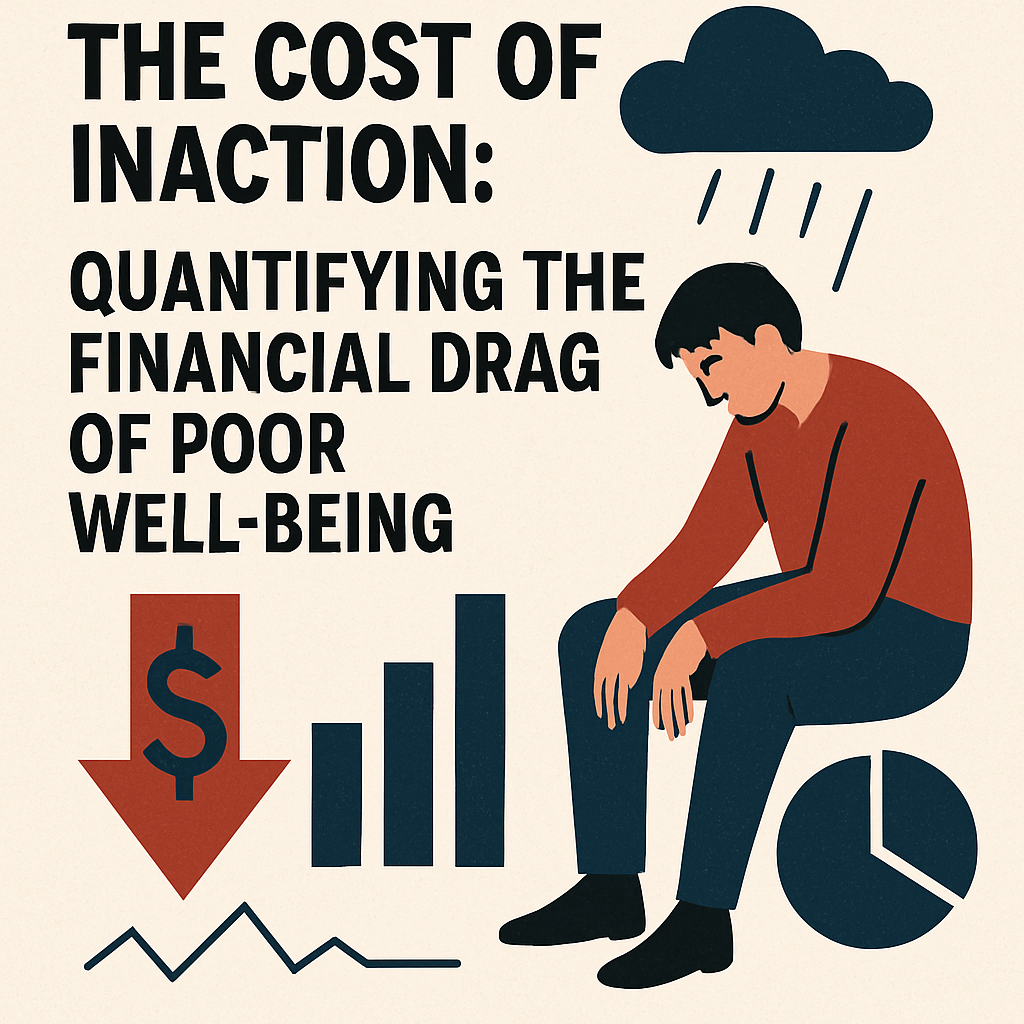The CFO's Guide: Calculating the True ROI of Employee Well-being
For decades, "employee well-being" has been categorized on the balance sheet as an intangible—a well-intentioned but difficult-to-measure HR expense. In a world of tightening budgets and rigorous financial scrutiny, these initiatives are often the first to be questioned and the first to be cut.
This is a critical, and costly, strategic error.
The modern CFO understands that the health of a company's workforce is no longer a "soft" metric. It is a powerful leading indicator of future financial performance. A decline in employee well-being is a direct precursor to increased costs, reduced productivity, and heightened business risk.
This guide provides a practical, CFO-friendly framework for calculating the return on investment in employee well-being, moving it from the "cost center" column to its rightful place as a measurable driver of profit and enterprise value.
The Cost of Inaction: Quantifying the Financial Drag of Poor Well-being
Before calculating the potential return of any investment, a prudent financial leader must first quantify the cost of the problem. Low employee well-being is not a passive issue; it is an active financial drag on your organization. Here is how to measure it.
1. The Cost of Turnover
Burnout and low well-being are primary drivers of voluntary attrition. The replacement cost for a salaried employee is conservatively estimated at 1.5 times their annual salary, factoring in recruitment, training, and lost productivity.
Formula: (Number of Annual Departures) x (Average Annual Salary) x 1.5 = Annual Cost of Turnover
Example: For a 500-person company with a 15% turnover rate (75 departures) and a €60,000 average salary, the annual cost is a staggering €6.75 million.
2. The Cost of Disengagement (Productivity Loss)
Employees suffering from low well-being are often disengaged. Gallup research consistently shows that disengaged employees are less productive (by approximately 18%), have higher absenteeism, and more accidents.
Formula: (Total Employees) x (Avg. Salary) x (% Disengaged) x 18% = Annual Productivity Loss
Example: For the same 500-person company with a 20% disengagement rate, the lost productivity costs over €1 million annually.
3. The Cost of Absenteeism
Poor mental and physical health is a direct cause of increased sick days.
Formula: (Total Unplanned Days Lost to Absence) x (Average Employee Daily Cost) = Annual Cost of Absenteeism
Example: If the average daily cost per employee is €300 and the company loses 1,500 days to unplanned absence, the direct cost is €450,000.
In summary, the cost of inaction for even a mid-sized company can easily run into the millions, representing a significant and tangible risk to the profit and loss (P&L) statement.
The Return on Investment: Measuring the Financial Upside
A strategic investment in well-being generates returns through both direct cost reduction and indirect value creation.
1. Direct Cost Reduction
Using our example, a 10% reduction in turnover driven by improved well-being would result in an annual savings of €675,000. A 5% improvement in engagement would recover over €250,000 in lost productivity. These are immediate, measurable returns.
2. Talent Attraction and Brand Value
In a competitive talent market, a genuine culture of well-being is a powerful differentiator. This leads to a stronger employer brand, lowering talent acquisition costs and improving the quality of candidates, creating a long-term positive impact on your human capital assets.
3. Innovation and Agility (Value Creation)
This is the most significant, albeit harder to quantify, return. Employees who are not in a state of survival are more creative, more collaborative, and more capable of handling change. A culture of high well-being is a direct investment in the organization's capacity for innovation and its resilience in the face of market disruption.
The Strategic Imperative: From Blind Investment to Precision Targeting
The ROI framework is clear. However, the return is only realized if the correct investments are made. Spending your budget on a generic wellness app when the root cause of burnout is systemic workload issues is a guaranteed way to achieve zero return.
This is where a holistic diagnostic becomes an essential tool for financial prudence and risk mitigation.
Quintaum’s platform moves beyond guesswork. Our diagnostics identify the specific, highest-impact drivers of low well-being and burnout in your organization. We don't just tell you that you have a turnover risk; we tell you why—is it a lack of leadership support, poor work-life integration, or insufficient recognition?
This data allows you to allocate your well-being budget with the surgical precision expected of any other capital investment. Instead of making a blind, high-risk bet on a generic program, you can make a targeted, low-risk investment that addresses the actual root cause of the problem, ensuring a positive ROI.
The Bottom Line
Employee well-being is no longer an intangible HR metric. It is a measurable driver of financial performance that belongs on every CFO's dashboard. A data-driven, diagnostic approach to managing it is one of the smartest investments you can make in the long-term, sustainable growth of your enterprise.
Stop funding well-being initiatives based on hope. Start building a data-driven business case. Request a strategic briefing on how Quintaum's diagnostic data can de-risk your people investments and provide a clear line of sight to ROI.




